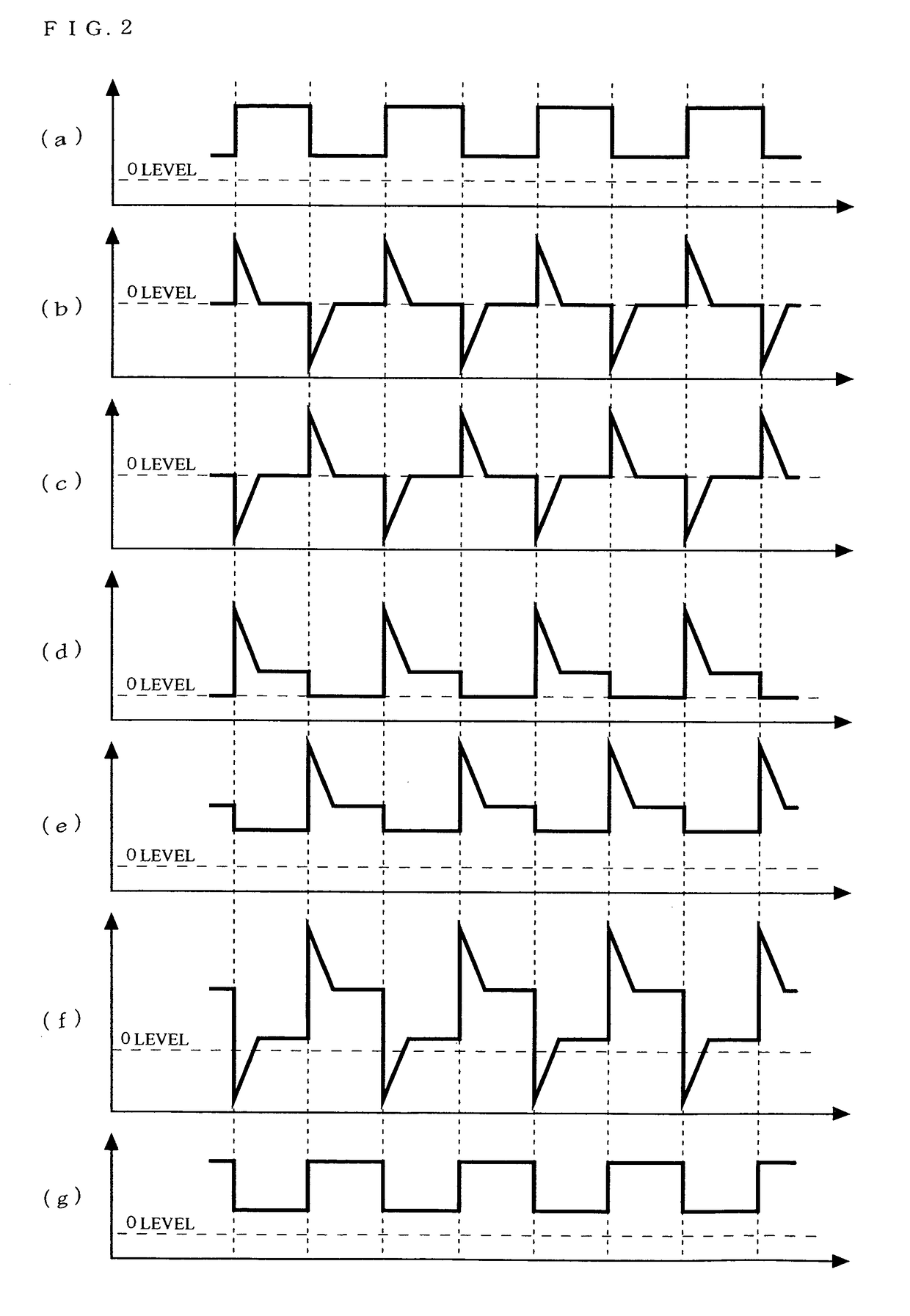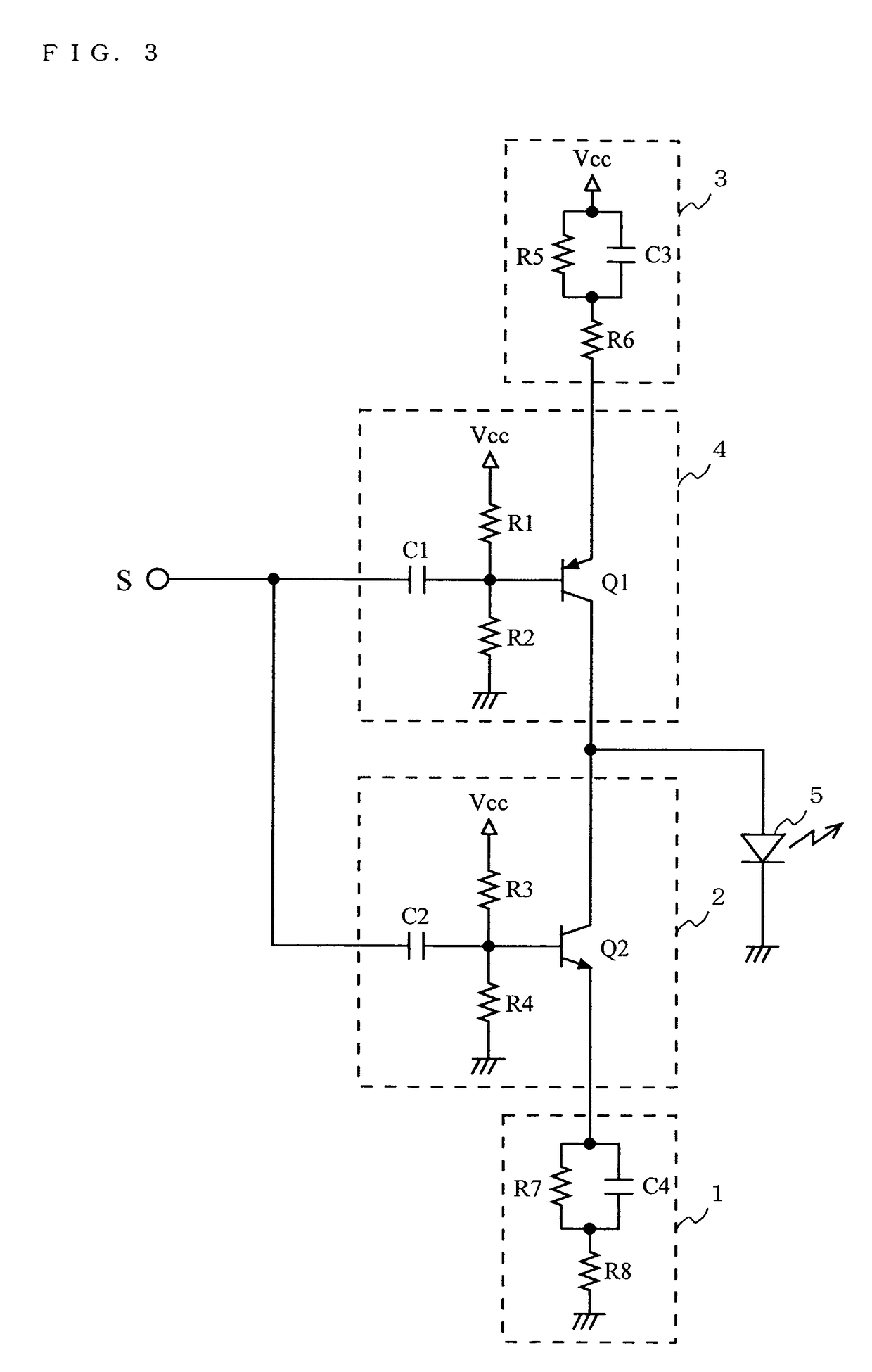Optical transmitter circuit
a technology of optical transmitter and optical receiver, which is applied in the direction of electromagnetic transmission, electromagnetic transmission, and semiconductor lasers. it can solve the problems of deteriorating extinction ratio, increasing power consumption, and inability to operate at high speed, and achieve desirable extinction ratio, low power consumption, and high speed
- Summary
- Abstract
- Description
- Claims
- Application Information
AI Technical Summary
Benefits of technology
Problems solved by technology
Method used
Image
Examples
first embodiment
[0057]FIG. 3 shows, in detail, a configuration of an optical transmitter circuit according to the first embodiment of the present invention. In the optical transmitter circuit of the first embodiment, the functional blocks shown in FIG. 1 are each configured as follows.
[0058]The first light emitting element driving section 2 includes a transistor Q2, resistors R3 and R4, and a capacitor C2. The transistor Q2 may be an NPN-type bipolar transistor, an N-channel field effect transistor, or the like. The base of the transistor Q2 is connected to a power supply VCC via the resistor R3 and grounded via the resistor R4, and receives the digital signal S via the capacitor C2. The collector of the transistor Q2 is connected to the light emitting element 5. The resistor R3, the resistor R4 and the capacitor C2 are used for adjusting the DC current through the first light emitting element driving section 2.
[0059]The second light emitting element driving section 4 includes a transistor Q1, resi...
second embodiment
[0065]FIG. 4 shows, in detail, a configuration of an optical transmitter circuit according to the second embodiment of the present invention. The optical transmitter circuit of the second embodiment differs from the optical transmitter circuit of the first embodiment in the configuration of the second light emitting element driving section 4.
[0066]The second light emitting element driving section 4 includes the transistor Q1, the resistors R1 and R2, and capacitors C1 and C5. The resistor R1, the resistor R2 and the capacitor C1 are used for adjusting the DC current through the second light emitting element driving section 4. The capacitor C5 is inserted between the collector of the transistor Q1 and the light emitting element 5. With such a configuration, the driving current D2 outputted from the second light emitting element driving section 4 when the digital signal S is inputted is an AC component current obtained by cutting the DC component off the current shown in the waveform ...
third embodiment
[0068]FIG. 5 shows, in detail, a configuration of an optical transmitter circuit according to the third embodiment of the present invention. The optical transmitter circuit of the third embodiment differs from the optical transmitter circuit of the first embodiment in the configuration of the first light emitting element driving section 2.
[0069]The first light emitting element driving section 2 includes the transistor Q2, the resistors R3, R4 and R9, and capacitors C2 and C6. The collector of the transistor Q2 is connected to the power supply VCC via a resistor R9, and is connected to the light emitting element 5 via the capacitor C6. With such a configuration, the driving current D1 outputted from the first light emitting element driving section 2 when the digital signal S is inputted is an AC component current obtained by cutting the DC component off the current shown in the waveform (d) of FIG. 2, i.e., only the rising-edge peaking current. The driving current D1 made only of an ...
PUM
 Login to View More
Login to View More Abstract
Description
Claims
Application Information
 Login to View More
Login to View More - R&D
- Intellectual Property
- Life Sciences
- Materials
- Tech Scout
- Unparalleled Data Quality
- Higher Quality Content
- 60% Fewer Hallucinations
Browse by: Latest US Patents, China's latest patents, Technical Efficacy Thesaurus, Application Domain, Technology Topic, Popular Technical Reports.
© 2025 PatSnap. All rights reserved.Legal|Privacy policy|Modern Slavery Act Transparency Statement|Sitemap|About US| Contact US: help@patsnap.com



